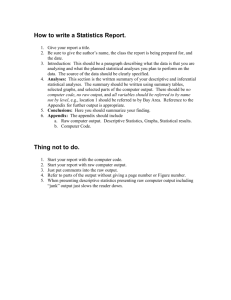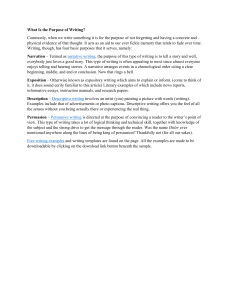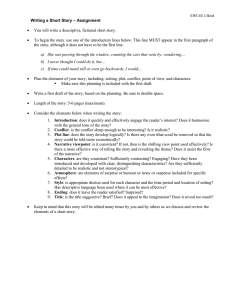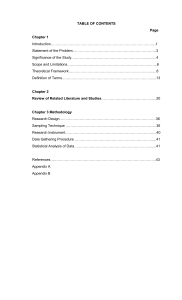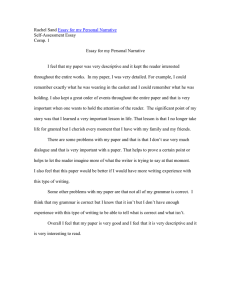Uploaded by
siddiquiabrar011
Research Report Methodology & Results Writing Guide
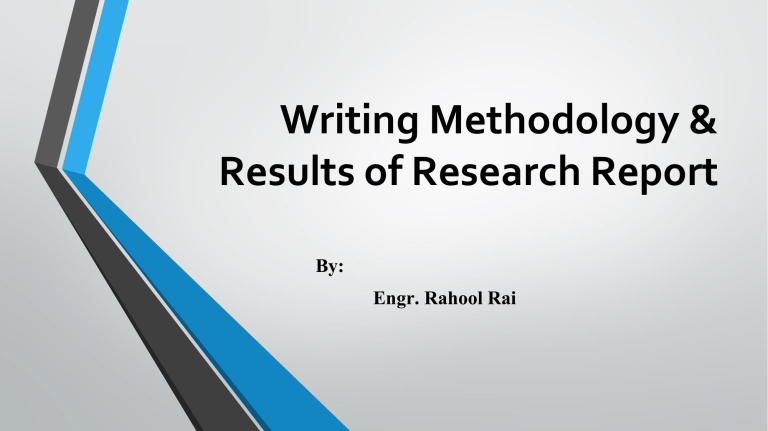
Writing Methodology & Results of Research Report By: Engr. Rahool Rai Methodology Section • The methods section is the most important part of a research paper . • It provides a clear description of : • how the research was done. • what was done to answer the research question • how the results were analysed. Methodology Section It must be written with enough information so that: (1) the research could be repeated by others to evaluate whether the results are reproducible, and (2) the audience can judge whether the results and conclusions are valid. Methodology Section • The method starts directly below the introduction. • It is typically divided into three subsections: • Participants • Materials • Procedure Methodology: Participants • Information on participants includes: • Number of participants. • Procedures for selecting participants or the sampling method (random, opportunistic etc.). • Demographic information (age, gender, occupation, educational level). • If some participants did not complete the experiment, state how many and why they did not continue Example Method Participants 20 male and 20 female participants from Birmingham City University participated in the current study. No other demographic information was collected. Methodology: Materials • Describe materials used and their function in enough detail so others can replicate • For example: in describing word lists, include the number of words, approximate length of words, were they in capital or lowercase letters, etc. • A copy of the materials can be included in an appendix at the end of the paper; you would refer your reader to that appendix; (see Appendix for a complete list of the words used in this experiment). Methodology: Procedure • The procedure is like the instructions for baking a cake or making something from Lego. • It describes exactly what was done in the study and the order in which things were done. • Describe the instructions given to participants • The procedure should be logical, and contain sufficient information for the reader to follow. Methodology Example Methodology Participants Sixty university students (30 males and 30 females) participated in this study for extra course credit in a Psychology Materials Three word lists were created, each of which consisted of 20 words. See Appendix for a complete list of the words used in this experiment. All words were written in lowercase letters. The length of each word ranged from 5 to 8 letters... Procedure Participants were tested individually in the presence of the experimenter... • A research report has seven components: Methods A METHODS SECTION MUST CONTAIN: • Descriptions of Data • Think in terms of: “Who, What, When, Where, Why and How?” • Target Population • The Ways Data were Collected: • Sampling • Delivery Methods • Response Rates Descriptions of Variables • Statement of dependent and independent variables • Names for the variables—make them intuitive! • Word for word description of the questions. The ways variables are coded • The techniques that will be used to test your hypotheses or research questions Results • The results section chronicles the findings of the statistical analyses and assesses whether your expectations (hypotheses) were correct. • Professional tables showing descriptive and inferential statistics • The narrative discusses ONLY VERY IMPORTANT findings and refers to where information can be found in the tables as different facts are discussed. • The tables contain almost all statistical information so that the author does not have to write a narrative for every detail in the analysis. Results Purpose: To report the key findings and the statistical analyses conducted ● The results section is one of the most feared sections of the report. ● The results section should start with descriptive (summary) statistics (e.g. Mean, median, range etc.) ● A summary table of descriptive statistics can be provided ● Use graphs and graphs and axis are titled and the graph means something to the overall report. Result Example Results The mean number of words was 25.6 and the mean. See Figure 1 for a summary of descriptive statistics. These data were analyzed using a t-test and the results were statistically significant, t(30) = 4.99, p = .002, suggesting that younger participants were able to recall more words than older participants. Successful Report Writing • • • • Start writing early – important details about the study may be forgotten if the write-up is left to the last minute. Remember – a naive reader should be able to follow your report and replicate your findings. Read – reading journal articles will help you with structuring your report and understanding the required style. Reflect – reflect upon the comments you receive on your practical reports and essays – these are provided to help you! Figure Example: Figure 1. Average number of words recalled as a function of age.

